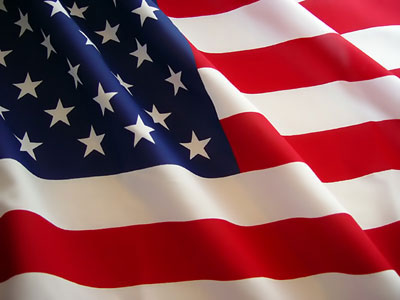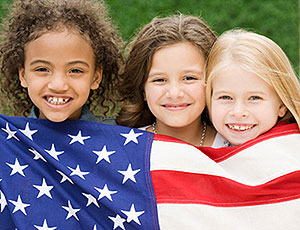Though according to the Paris peace treaty in 1783 there was cessation of arms and Britain was compelled to give recognition to the union of 13 colonies, it was looking for opportunities to take revenge. It was in 1812 when the second war with Americans who were then committed to expand their territories, broke out. Guarding the entrance to Baltimore harbor via the Patapsco River during the War of 1812, Fort McHenry faced almost certain attack by British forces. Major George Armistead, the stronghold's commander, was ready to defend the fort, but he wanted a flag that would identify his position, and one whose size would be visible to the enemy from a distance. Determined to supply such a flag, a committee of high-ranking officers called on Mary Young Pickersgill, a Baltimore widow who had had experience making ship flags, and explained that they wanted a United States flag that measured 30 feet by 42 feet. She agreed to the job.

With the help of her 13-year-old daughter, Caroline, Mrs. Pickersgill spent several weeks measuring, cutting, and sewing the 15 stars and stripes. When the time came to sew the elements of the flag together, they realized that their house was not large enough. Mrs. Pickersgill thus asked the owner of nearby Claggett's brewery for permission to assemble the flag on the building's floor during evening hours. He agreed, and the women worked by candlelight to finish it. Once completed, the flag was delivered to the committee, and Mrs. Pickersgill was paid $405.90. In August 1813, it was presented to Major Armistead, but, as things turned out, more than a year would pass before hostile forces threatened Baltimore.
After capturing Washington, D.C., and burning some of its public buildings, the British headed for Baltimore. On the morning of September 13, 1814, British bomb ships began hurling high-trajectory shells toward Fort McHenry from positions beyond the reach of the fort's guns. The bombardment continued throughout the rainy night.
The Star-spangled banner, the National Anthem of the United States of America is basically a poem inspired by the Battle of Baltimore, fought on September 12-14. During the British campaign against Washington, D.C., an elderly and respected physician, Dr. William Beanes was arrested for unfriendly acts toward the British soldiers which resulted in his arrest. Francis Scott Key, a prominent lawyer and friend of Dr. Beanes was sent by President James Madison to obtain his release. Following negotiations, the British agreed to release Beanes. However, since the British were going to attack Baltimore, Maryland next, they would allow no one to go ashore. The British landed soldiers on September 12 and engaged in a brisk land battle, however, they were not able to capture Baltimore. As part of a two pronged attack, the British now sent their naval fleet to attack and destroy the port city. The main defense of Baltimore harbor was Fort McHenry. For 25 hours the British fleet fired rockets and bombs at the fort. The fort's defenders bravely withstood the bombardment and did not surrender. The British realized they could not take Baltimore without paying for it with heavy casualties. Since they were not willing to pay this price, they departed from Baltimore. During the bombardment, Key was down river and while watching was inspired to write a poem that tells the story of the battle. When he reached Baltimore he finished the poem. Key wrote the poem to match the meter to be sung to an old English tune To Anacreon in Heaven. The song slowly grew in popularity and was well known and used by both sides during the Civil war. In later years it was very popular with the military and it was used as an "unofficial" national anthem. During World War I, the song became so widely accepted that a drive resulted in the Congress making it the National Anthem in 1931.

The National Museum of American History, which is part of the Smithsonian Institution, displays in its main lobby the Star-Spangled Banner which is 30 feet wide and 42 long. Each star is two feet from point to point and each stripe is two feet wide. Because of its deteriorated condition, most Americans have long assumed that this flag flew during the battle. However, historians using both British and American sources have found that during the battle there was a late summer storm which would have prevented the 1260 square foot woolen flag from being flown. A 17 by 25 storm flag would have been the size of the actual flag flying during the battle. The large flag, however, was raised the following morning as the British were departing from Baltimore. This would have been the flag Key would have seen when entered Baltimore. The manuscript that Key wrote was not on the back of an envelope, they had not yet been invented. The original manuscript is now on display at the Maryland Historical Society in Baltimore. Fort McHenry still stands and it is part of the National Park Service. The fort is the only site to have both a national monument and historic shrine designation.
The Anthem
The Defense of Fort McHenry
by Francis Scott Key
20 September 1814
Oh, say can you see, by the dawn's early light,
What so proudly we hailed at the twilight's last gleaming?
Whose broad stripes and bright stars, through the perilous fight,
O'er the ramparts we watched, were so gallantly streaming?
And the rockets' red glare, the bombs bursting in air,
Gave proof through the night that our flag was still there.
O say, does that star-spangled banner yet wave
O'er the land of the free and the home of the brave?
On the shore, dimly seen through the mists of the deep,
Where the foe's haughty host in dread silence reposes,
What is that which the breeze, o'er the towering steep,
As it fitfully blows, now conceals, now discloses?
Now it catches the gleam of the morning's first beam,
In full glory reflected now shines on the stream:
'Tis the star-spangled banner! O long may it wave
O'er the land of the free and the home of the brave.
And where is that band who so vauntingly swore
That the havoc of war and the battle's confusion
A home and a country should leave us no more?
Their blood has wiped out their foul footstep's pollution.
No refuge could save the hireling and slave
From the terror of flight, or the gloom of the grave:
And the star-spangled banner in triumph doth wave
O'er the land of the free and the home of the brave.
Oh! thus be it ever, when freemen shall stand
Between their loved homes and the war's desolation!
Blest with victory and peace, may the heaven-rescued land
Praise the Power that hath made and preserved us a nation.
Then conquer we must, for our cause it is just,
And this be our motto: "In God is our trust."
And the star-spangled banner forever shall wave
O'er the land of the free and the home of the brave!